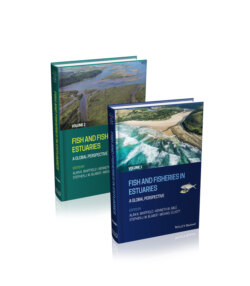Читать книгу Fish and Fisheries in Estuaries - Группа авторов - Страница 19
1.3 Estuary definition and types
ОглавлениеIn this book, we have defined an estuary as follows: “An estuary is a semi‐enclosed coastal body of water which is connected to the sea either permanently or periodically, has a salinity that is different to that of the adjacent open ocean due to freshwater inputs, and includes a characteristic biota” (Whitfield & Elliott 2011). This definition takes into account the influence of both fresh water and marine water on the composition of the estuarine water and does not stipulate that the fresh water must be solely riverine in origin. The definition also acknowledges that some estuarine systems, especially those in arid and semi‐arid regions of the world, may exhibit hypersaline conditions at certain times (Potter et al. 2010). There is also an emphasis that a true estuary has a land boundary that partially encloses the water body that may, at certain times, be closed off to the sea by a sand berm.
Although some large coastal water bodies, such as the Baltic Sea, fulfil most or all of the criteria of the above estuarine definition as a Brackish Sea, other coastal areas (e.g. parts of the Atlantic Ocean adjacent to the Amazon Estuary) are estuarine in nature but cannot to be described as a true estuary due to the lack of a surrounding land boundary. For the purposes of this book, we have not limited ourselves to conventional riverine‐based estuaries, and a range of estuarine waters are therefore covered, including semi‐enclosed coastal systems that are estuarine in nature due to freshwater inputs from aquifers rather than streams or rivers. A key consideration in the above approach, which is also captured in the definition already given, is that the ichthyofauna reflects or contains various life stages of typically estuary‐associated species.
Although a wide range of estuarine types have been described in the literature, for the sake of simplicity and usefulness, the following classification system, which places estuaries into three primary physiographic categories, is appropriate (Whitfield & Elliott 2011):
1 Valley estuary ecosystems. This type of estuary (e.g. fjords, fjards, estuarine bays and most typical drowned river valleys) can have a single major channel, in which case it is referred to as a simple estuary (e.g. Thames, England), or it can have numerous tributary channels feeding into the main estuary, in which case it is referred to as an irregular estuary (e.g. Chesapeake Bay, USA). The prevailing salinity regime within this type of estuary can range, according to locality, from tidal freshwater to euhaline, but is usually oligohaline or mesohaline to euhaline.
2 Estuarine lagoon and lake systems. This type of estuary includes most intermittently open estuaries (e.g. Burrill Lake, Australia), virtually all large coastal plain estuaries that have restricted mouths (e.g. Laguna Madre, USA), as well as estuarine embayments that may be fed mainly by aquifers rather than river systems (e.g. Langebaan Lagoon, South Africa). The prevailing salinity regime in this type of estuary can range from oligohaline to hyperhaline, depending on the balance between river inflow, direct precipitation, evaporation and marine connectivity.
3 River mouth ecosystems. This type of estuary includes river mouths, delta front estuaries, as well as those systems that are characterized by typical deltaic formations. These estuaries are completely dominated by riverine influences for most of the year and may take the form of a single (e.g. Coorong, Australia) or multiple mouth arrangement (Mississippi, USA). Prevailing salinities in this type of system are mainly oligohaline and conditions range from riverine to estuarine depending on the magnitude of the freshwater inflow relative to the estuary size.
A number of books covering the biology and ecology of fishes in estuaries have been published. However, without exception, these reviews have focused on fishes in particular biogeographic regions (e.g. Blaber 2000 for tropical regions) or particular parts of the world (e.g. Able & Fahay 1998, 2010 for eastern North America; Elliott & Hemingway 2008 for the UK and Europe; Whitfield 2019 for southern Africa). This compilation represents the first global attempt to assess the status of our knowledge on fish and fisheries in estuaries in both hemispheres and on all continents (with the exception of Antarctica, which has not been studied from an estuarine ichthyological perspective). Figure 1.6 presents an initial conceptual model, which underlines many of the features covered in this book (from Elliott et al. 2007).
Figure 1.6 Conceptual model of the environmental, biological and anthropogenic factors influencing fishes in estuaries
(modified from Elliott et al. 2007).
